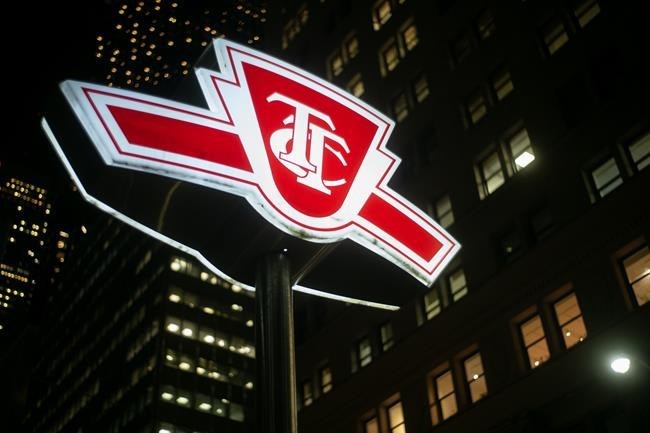Toronto police have been patrolling parts of the city's transit system in increased numbers for more than a month but critics say there's little information on the effectiveness on the move and it's unclear how long the costly measure will continue.
Police announced in late January that more than 80 officers would be at Toronto Transit Commission locations to enhance public safety. That came after a series of violent cases on the TTC, including stabbings, BB gun shootings and an alleged swarming.
At a budget meeting last month, city manager Paul Johnson told councillors that police wouldn't be able to afford the increased presence past the end of winter unless additional funding was considered.
The current costs of the police enhancement are approximately $1.5 million per month and are being covered by the service's overtime budget, said Toronto police spokeswoman Stephanie Sayer, who said the measure was "ongoing."
Some observers argue, however, that police, the TTC and the city need to make clear just how the measure has been working, and whether it has made the system safer.
Alok Mukherjee, a former chair of the Toronto police services board, said transparency around the increased police presence on transit is essential.
"The public is entitled to know and be part of a discussion of the most effective way to make our city and all its programs, such as public transit, safe," he said.
"We are being asked to take the police, the city government, on trust. But they owe it to tell us, 'Here is why we are doing what we are doing.'"
Experts, community workers and advocates have warned that having more police on transit could negatively affect Black, Indigenous and other transit riders, as well as criminalize people experiencing homelessness or mental distress.
Proactive measures addressing the underlying causes of violence on transit would serve better than a largely reactive response cases of violence on the TTC, Mukherjee said.
The additional officers – who are working overtime shifts to fill the patrols – can only prevent crimes by coincidentally being in the right place at the right time, he said.
The city should have commissioned a proper analysis of violence on the TTC and brought it to various city agencies before providing a response, he said.
"That hasn't happened, and we'll blow $18 million if this continues for the whole year," said Mukherjee.
"I think (the officers') mere presence may be causing some people to feel unsafe and it's important they know there is some well thought out decision on how best to tackle a situation that makes a lot of people not feel safe."
The boost in officers on the TTC also comes on top of a nearly $50-million hike to the city's police budget as well as the addition of more transit constables and uniformed staff on transit, Mukherjee said.
Toronto Police Chief Myron Demkiw has said a data-driven approach would guide where officers are deployed on the TTC and at what times. Police will not share that deployment data publicly, the force said.
The TTC's own data indicates customer offences went down for the month of January compared to the previous month – from 145 in December to 116 incidents. Those figures include occurrences ranging from mischief to assault, with no way to distinguish their severity.
At a recent TTC board meeting, staff said safety incidents targeting customers spiked at the outset of the COVID-19 pandemic, trended down in 2021, before increasing again through the end of 2022 to five incidents a day.
Shelagh Pizey-Allen, executive director of the transit users advocacy group TTCriders, said TTC customer offence data should have been made public when the boost in police was announced on Jan. 26.
"It really seemed haphazard, not based on evidence, not based on what's working in other cities," she said. "A lot of the measures were knee-jerk reactions."
The group is calling on the TTC to expand community supports, like "transit ambassadors" seen in other major North American cities, who don't have enforcement roles and can be seen as "a more friendly staff presence," Pizey-Allen said.
The TTC also needs to reverse new service cuts, said Pizey-Allen, calling that "a recipe for less safety" if it results in longer wait times and fewer people taking transit.
The TTC and Toronto police said the police presence on transit has received positive feedback from commuters who feel safer.
TTC spokesman Stuart Green said the transit agency responded to the concerns it had heard and shared customer offences data for January as soon as it was available.
"Our response was to the concerns of customers and employees who told us they were feeling unsafe in the wake of some high profile incidents," he said.
"Doing nothing was not an option and ensuring we balanced our approach between social supports and security is how we're responding."
Stuart said the TTC was committed to making the transit system safe.
"Our goal is to not only increase the sense of safety, but to make tangible improvements to safety," he said. "That is being measured and will be reported publicly."
This report by The Canadian Press was first published March 9, 2023.
Tyler Griffin, The Canadian Press



